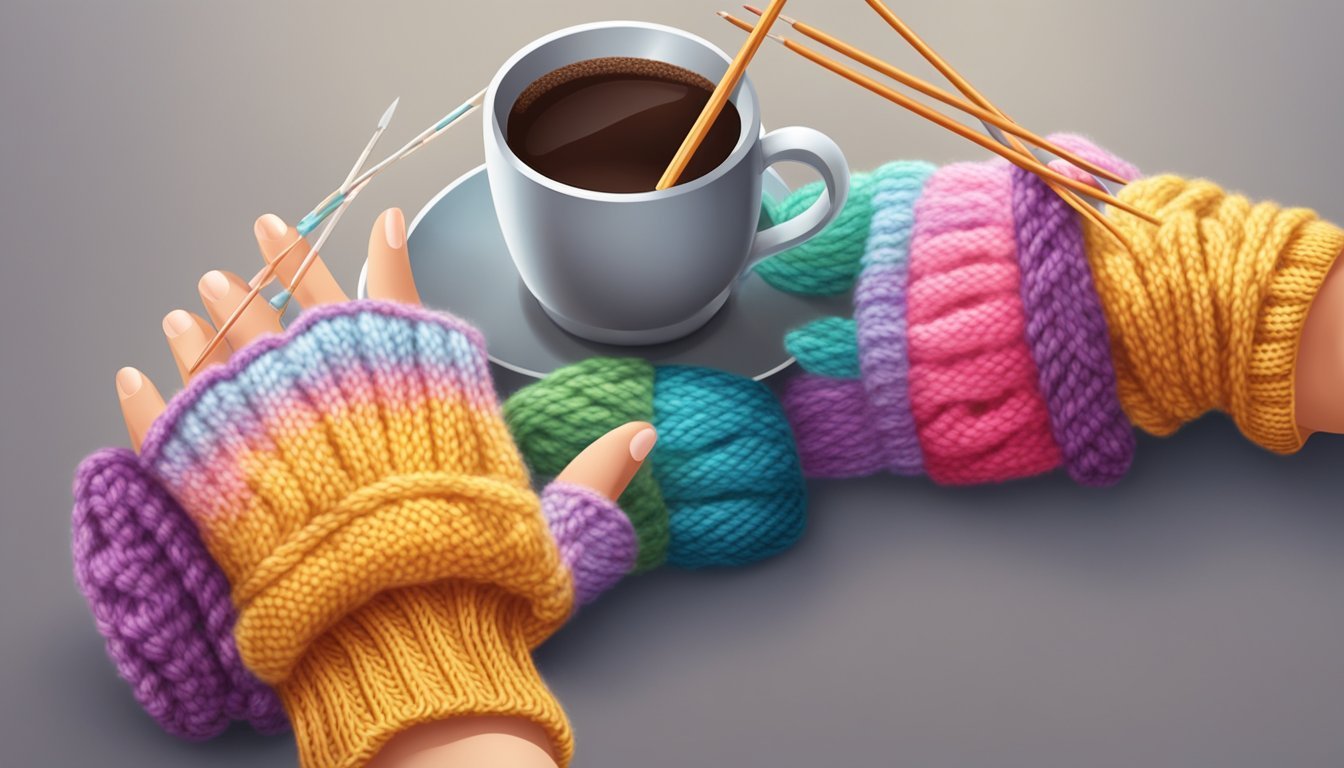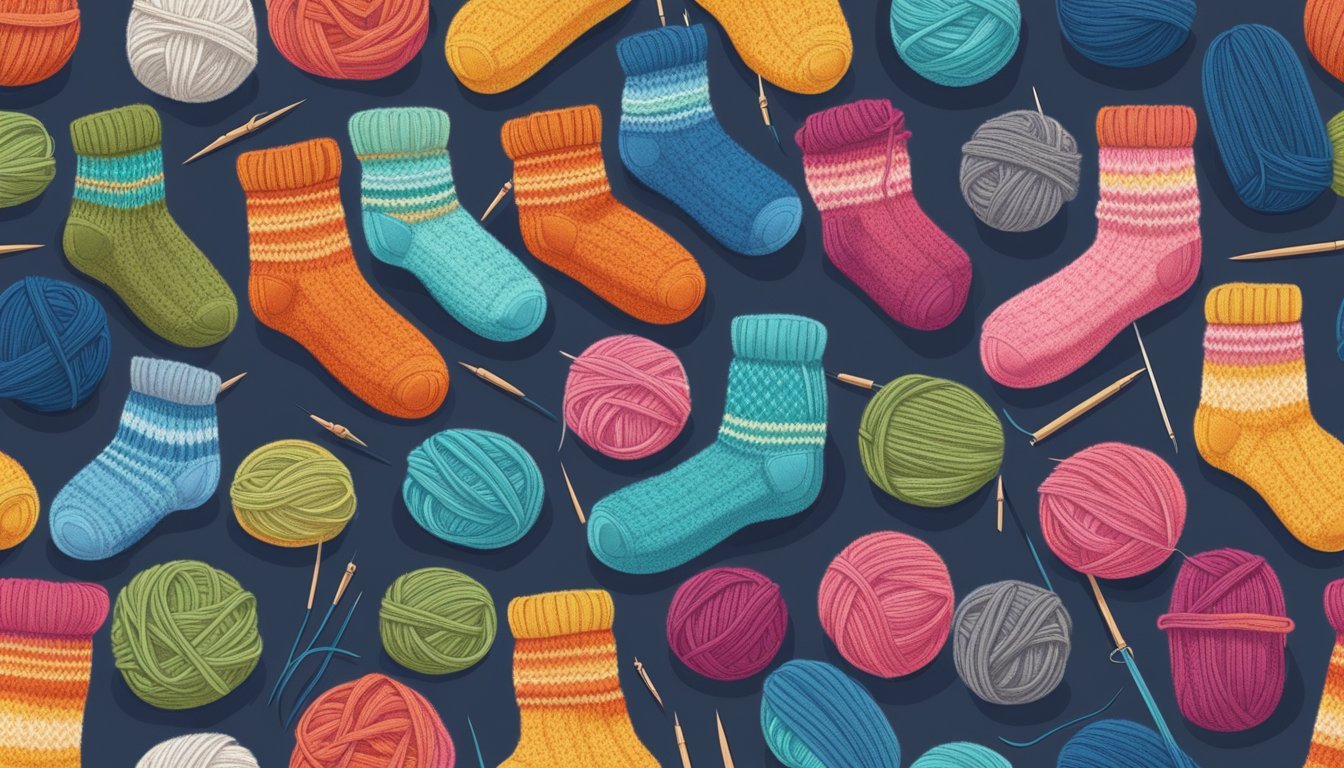Knitting can be a relaxing and rewarding hobby, especially when you start with easy patterns that build your skills. Whether you’re picking up needles for the first time or looking to enhance your collection of simple projects, you can create something fun and useful without feeling overwhelmed.

In this article, you’ll discover seven simple knitting patterns perfect for beginners.
These projects will help you gain confidence and experience while enjoying the process of crafting with yarn.
With the right tools and a bit of patience, you’ll be able to create beautiful pieces in no time.
1) Garter Stitch Scarf
The garter stitch scarf is a fantastic choice for beginners.
It uses the basic knit stitch throughout, making it easy to learn and perfect for practice.
To get started, you’ll need some yarn and knitting needles.
Super bulky yarn works quickly, while medium weight yarn gives a more traditional feel.
Simply cast on your desired number of stitches.
Then, knit every row.
That’s it! You’ll see a lovely texture form as you work.
You can make it as long or wide as you like.
This pattern is quite forgiving, so don’t stress if your tension varies a bit.
As you knit, you’ll get familiar with the rhythm of knitting.
This project is not only practical but also enjoyable to create.
Plus, it makes a great gift for friends and family.
2) Chunky Ribbed Blanket
The Chunky Ribbed Blanket is a perfect project for beginners.
It’s not only simple but also provides a cozy result that you can use in your home.
To start, you’ll need super bulky yarn.
Using Lion Brand Yarn’s Wool-Ease Thick & Quick will give you a warm and soft finish.
You can mix it with a bulky yarn like Homespun for added texture.
This pattern typically uses a combination of knit and purl stitches to create the ribbed effect.
It’s straightforward and allows you to see progress quickly.
Holding two strands of yarn together can make it even squishier.
As you knit, you will create a fabric that is both warm and stylish.
It’s great for snuggling on the couch or as a decorative throw.
Once you finish, you’ll have a lovely blanket made by your own hands.
Enjoy the process and wear your creation with pride!
3) Simple Knit Hat
Knitting a simple hat is a fantastic project for beginners.
It’s easy to learn and a fun way to practice your skills.
You can choose a basic pattern that uses just knit and purl stitches.
Start with a super bulky yarn.
This type of yarn makes the project quick to complete.
A chunky knit hat will keep you warm and also looks great.
You can opt for a classic ribbed brim.
This gives your hat a nice stretch and helps it fit snugly on your head.
Many patterns suggest a 2×2 rib or a simple rolled brim.
Don’t worry too much about perfection.
Knitting is about enjoying the process and creating something unique.
If you make a mistake, it just adds character to your work.
Consider adding a pompom on top for a fun touch.
It’s an easy detail that elevates your finished hat.
Plus, it’s a great way to use up leftover yarn.
A simple knit hat is not just a good project; it also makes a thoughtful gift for friends and family.
Knitting something by hand always adds a personal touch.
4) Beginner’s Dishcloth
Knitting a dishcloth is a great project for beginners.
It’s practical and doesn’t require too much yarn or time commitment.
Plus, you can use it daily!
Start by casting on just a few stitches, typically around 4.
You can keep it simple, knitting every row to create a garter stitch pattern.
This is perfect for building your confidence.
As you get comfortable, try adding a yarn over technique.
This involves knitting two stitches together, which can create a nice textured look.
Just repeat this a few times until your dishcloth reaches the desired size.
Cotton yarn is ideal for dishcloths due to its absorbency.
You might enjoy using a solid color or a fun variegated yarn for a bit of flair.
Once you finish, you’ll have a handy dishcloth that’s ready for the kitchen.
Not only will you have practiced your knitting skills, but you’ll also create something useful!
5) Easy Fingerless Gloves

Knit fingerless gloves are a fantastic project for beginners.
They’re quick, useful, and stylish.
Plus, you’ll get to keep your hands warm while having your fingers free for tasks like texting or typing.
To start, choose a simple pattern.
Many online sources offer easy patterns that guide you through the process.
You can complete a pair in just a few hours.
Begin by casting on the stitches for the cuff, typically using a ribbing stitch for some stretch.
The body of the glove is usually knit in stockinette stitch, and then you separate stitches for the thumb.
Don’t worry about making them perfect.
The charm of fingerless gloves lies in their handmade feel.
You can experiment with different yarns and colors to suit your style.
These gloves are great for outdoor activities in cooler weather.
They also make thoughtful gifts for friends and family.
Plus, you’ll gain confidence in your knitting skills with each pair you create.
6) Seed Stitch Cowl

The Seed Stitch Cowl is a fantastic project for beginners.
This pattern uses a simple knit and purl stitch combination, making it easy to pick up for new knitters.
You’ll work in a rhythm of knitting one stitch and purling the next.
This creates a lovely texture that’s both warm and visually appealing.
To start, cast on an appropriate number of stitches based on your yarn weight.
A typical recommendation is around 25 stitches.
Use any yarn you like, but a bulky option will yield a cozy result.
As you knit, the cowl can be made to your desired length.
The finished size usually measures about 32 inches in circumference.
This means you’ll wrap it comfortably around your neck.
You can also play with different yarns to customize your cowl.
Just remember to adjust the needle size according to the thickness of your yarn.
When you finish, you can seam the ends together and weave in any loose strands.
This project not only keeps you warm but also helps you practice basic knitting skills.
Enjoy your crafting!
7) Basic Knit Socks

Knitting socks can be a fun and rewarding experience.
You only need a few simple materials to get started.
Worst weight yarn and two knitting needles are perfect for beginners.
A basic sock pattern usually involves casting on, knitting in the round, and turning the heel.
Many patterns are beginner-friendly, providing clear instructions to guide you through each step.
You can use techniques like the magic loop method if you prefer circular needles.
It allows you to knit in the round without the need for double-pointed needles.
Don’t worry if you make mistakes; they’re part of the learning process.
Once you get the hang of it, you can experiment with different designs and colors.
Understanding Basic Knitting Techniques

Getting started with knitting involves a few essential techniques that will establish a solid foundation for your projects.
Knowing how to choose your needles and select the right yarn can greatly impact your comfort and success as a beginner.
Choosing the Right Needles
When starting your knitting journey, selecting the correct needles is crucial.
For beginners, size 8 (5 mm) or size 9 (5.5 mm) needles work well with most worsted weight yarns.
You can choose between straight needles or circular needles.
Straight needles are great for flat pieces, while circular needles are versatile and can be used for both flat and round projects.
Consider your comfort—some prefer the lightweight feel of aluminum, while others like the warmth of bamboo.
A good pair of needles will make your first projects easier and more enjoyable.
Always check for smoothness to ensure your yarn glides easily.
Yarn Selection Tips
Choosing the right yarn is also important for beginners. Worsted weight yarn is often the best starting point.
It’s thick enough to see your stitches but not too heavy to handle.
Color matters too! Opt for light-colored yarns, as they make it easier to see your stitches.
Avoid novelty yarns that can be tricky to work with.
For your first projects, acrylic yarn is budget-friendly and widely available.
It’s also easy to care for and comes in a variety of colors.
Check the yarn label for recommended needle sizes, which helps you avoid frustration while knitting.
By choosing the right tools, you set yourself up for a successful and enjoyable knitting experience.
Common Beginner Mistakes

When you start knitting, it’s easy to make a few common mistakes that can affect your projects.
Understanding some typical pitfalls can help you enjoy the craft more and improve your skills.
Avoiding Tension Issues
Tension control is essential in knitting.
If your stitches are too tight, you might struggle to move your needles.
Loose stitches can create gaps in your work.
To maintain consistent tension, try to keep the same grip on the yarn.
Here are some tips:
- Relax your hands: Tension often comes from holding the yarn too tightly.
- Practice regularly: The more you knit, the more natural your tension will feel.
- Use the same yarn and needles: Switching tools can change your tension unexpectedly.
Experiment with different techniques to find what feels comfortable for you.
Remember, it’s all about getting into a rhythm.
How to Fix Dropped Stitches
Dropped stitches happen, especially for beginners.
Catching them early is crucial.
If you don’t, they can create holes in your project.
To fix a dropped stitch, follow these steps:
- Identify the dropped stitch: Check which row it dropped from.
- Use a crochet hook: Pick up the dropped stitch and pull the working yarn through.
- Knit it back up: Reintegrate the stitch with your knitting.
Keep a few tools handy while you work, like a crochet hook and scissors.
Fixing these mistakes can boost your confidence and improve your skills!


